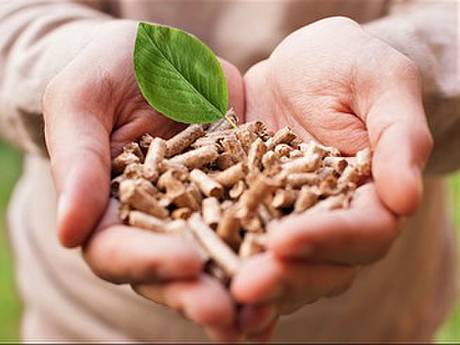
Biomass is a nonfossil bio-renewable and bio-degradable substance of organic origin existing in the form of products and wastes of forestry and agriculture (plant and animal production), fishery and related industries as well as being a bio-degradable component of industrial or household wastes. This definition of biomass in Ukrainian laws has been harmonized with the definition set in EU Directive (RED and RED II).
Biomass is the oldest energy source, however, its use was limited to burning with extremely low efficiency. Biomass as a source of energy has become more popular recently with new pros for its use:
- use of plant biomass if renewed continuously (for example, reforestation) does not cause CO2 concentration in atmosphere;
- cultivated land abundance has appeared in the developed countries recently which could be used as energy plantations;
- developing countries may allocate low-productivity lands for energy plantations;
- waste (agricultural, industrial and household) use to source energy solve environmental problems;
- newly-created technologies allow more efficient biomass use.
Composition of biomass defines it as carbonaceous (plants, wood chips, sawdust, seaweed, grains, paper, packaging) or sacchariferous (sugar-beet, sugar cane, sorghum).
Biomass use has become popular trend in the world long ago which reduces expensive gas use and CO2 emissions in the atmosphere.
Bio-energy is the only source of renewable energy which is capable to cover three prime energy sources required by both people and industrial enterprises: bio-heating and bio-cooling, bio-energy and bio-fuel.
Bio-energy is rated the fourth in the world by production volume and energy consumption. Its share in the primary energy amounts to 10%.
In 2009 EU started elaborating policy to secure “sustainable energy union and long-standing policy for climate changes”. Renewable energy Directive (RED) was elaborated as a part of the project which initially set 20% of end energy consumption out of renewable sources as a mandatory objective up to 2020.
Nowadays over 30% of electricity output is produced of renewable sources in Europe which is significant for the last 20 years (12% in 2000). Currently more energy is generated of renewable sources (solar, wind and biomass) than of coal and natural gas – 20.9% and 20.6% respectively in 2017.
Biomass share in electricity production of EU amounts to 6%, and in heating to 16%.
Lithuania (33.6%), Finland (33.5%), Sweden (31.9%), Estonia (26%), Latvia (22.9%) are the leading European countries for biomass energy use.
The major share of bio-fuel use in EU is solid biomass (except for charcoal) (69% or 89.5 million t per year) and bio-gas is rated the second (12%).
Lithuania in the north of Baltic region and its people has always faced economic and political challenge of dependence upon imported fossil gas from Russia. In 2014 Lithuania being already a member of EU paid the highest price for imported gas. This price was cited as politically-motivated as it was not related to market situation.
Biomass volume per capita in Lithuania is one of the highest in EU and statistics prove that Lithuania will be a leader in EU as for available energy biomass.
Transfer from imported gas to local biomass reduced heating prices for local community as well as CO2 emissions. Key benefits of biomass use exceed pure environmental needs. More than 7500 people are employees of the companies related to technologies, production and supply of biomass. Export of equipment and technologies reached Euro 100 million in 2015 and is expected to rise to Euro 300 million in 2020. Average salary in the biomass sector exceeds 1.5 times the average salary in Lithuania. Annual turnover of biomass sector amounts to Euro 410 million.
Thus, Lithuania implemented three things which Ukraine needs to do.
- Lithuanian authority in charge of biomass regulation has fixed extra 6% profitability for investments to biomass thermo-generation units during 16 years since 2008 to 2016. This extra-profitability went as a surplus to conventional 5% profitability which was in force for other types of thermo-generation units and added to 2% inflation encouraged central heating supply companies to invest into biomass thermo-generation units and reduce investments in less profitable fossil fuel units.
- High demand for bio-fuel catered to by regulatory incentives required transparent mechanism of bio-fuel procurement in vast volumes. Consequently, Lithuania introduced bio-fuel exchange Baltpool in 2012. Biomass share procured through it grew from 1% in 2013 up to 86% in 2016. After biomass exchange creation biomass market in Lithuania has become more transparent and effective. Due to the exchange biomass cost decreased to 40% from 2012 to 2015 depending on the region and biomass cost gap between neighbour regions nearly vanished. Bio-energy Association of Ukraine and the State Agency of Ukraine for Energy Saving and Energy Efficiency promote the initiative of biomass exchange in Ukraine now.
- Lithuania has demonopolized thermo-energy production in central heating supply systems and introduced transparent indiscriminate system of connection of independent thermo-energy producers to heating supply network.
The goal of the above steps was to fill the central heating supply networks with cheaper heating generated of biomass and to reduce tariffs for end consumers. Such law has been developed in Ukraine supported by Bio-energy Association of Ukraine and the State Agency of Ukraine for Energy Saving and Energy Efficiency.
It is proposed to implement the above two initiatives in Ukraine to enhance biomass market and energy-efficiency of industry, domestic utilities sector etc.